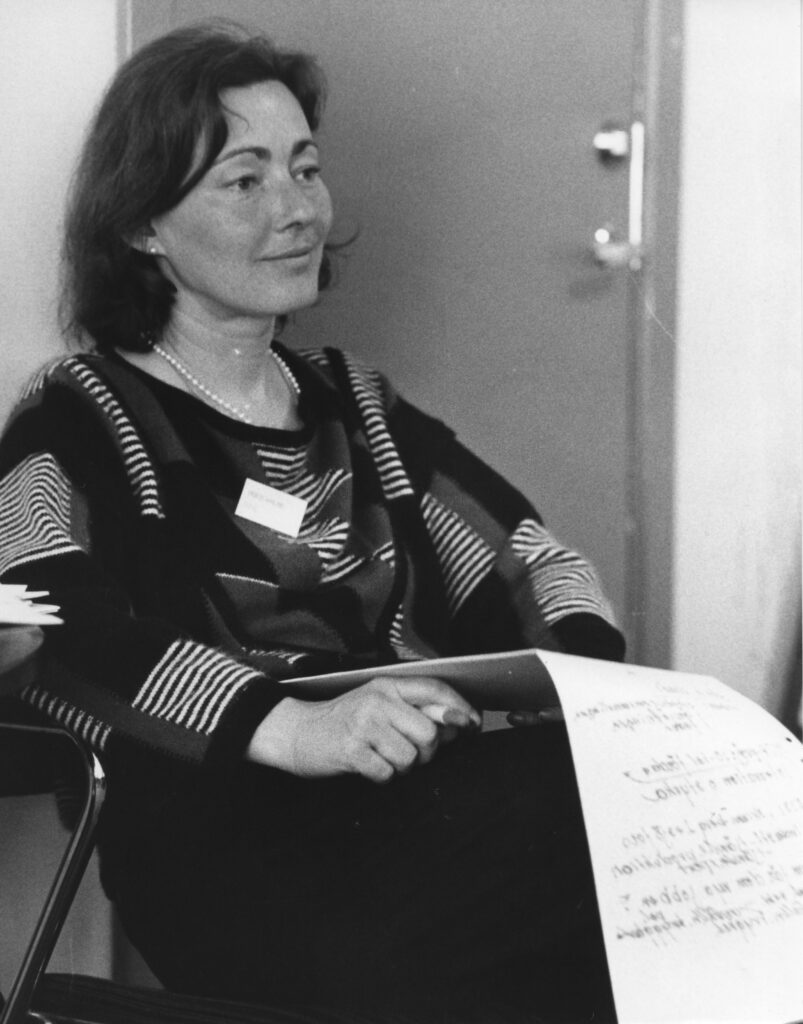Ingrid Wahlund became TAM’s first female MD. During her time at TAM, the department was very expansive and lively.
In 1989 Ingrid Wahlund was appointed head of the White-Collar movement’s Archive and Museum. A position she held until her death in 1994. Under her leadership, TAM developed on many levels. It became a well-respected institution that documented and highlighted the history and development of the white-collar movement.

She had a licentiate of Arts in Education and Sociology of Work and had originally intended a career as a researcher. In the mid-1970s, she worked in New Zealand as researcher and teacher. But eventually, the interest in trade unions took over. She became a permanent employee at TCO. Her deep knowledge of research and her commitment to research issues came to characterize her work at TCO. In the 1980s, she was responsible for research issues and research initiation within TCO.
During Wahlund’s time as head of TAM, the department was run a very impressive and expansive operation. From its foundation in 1984, the business had grown and TAM had become something of a centre for research and study on officials and civil servants and their history. An increasing number of researchers and students visited TAM, according to the department’s yearbook 1989 – 1990.
In order to increase interest in further studies of the white-collar movement, TAM produced the publication ”Tjänstemännen i tiden. Dokument och bilder från TAM:s arkiv” (Eng. “White-collar workers of the times. Documents and images from TAM-Arkiv”). The publication described the archival holdings in TAM-Arkiv and pointed out important research areas. It also provided tips on essay topics for students at different levels.
The exhibition ”A travelling salesman in dance” was inaugurated in 1990. The exhibition was designed in collaboration with Facklärarförbundet (an association of vocational teachers) and Danspedagogförbundet (an association of dance teachers). En handelsresande i dans was shown at the office of Facklärarförbundet and Danshögskolan. In the autumn of 1990, it was exhibited at the Nordic Museum, among other places.
In 1990, plans were also made for a 5-credit course in white-collar history in collaboration with TCO’s trade union education, and TBV and the Department of Economic History at Uppsala University. The training was to deal with different theoretical and methodological approaches in white-collar studies, the historical organization of civil servants and officials and the role of organizations in society. The training was to include a project work that included 5 credits.
During her career Ingrid Wahlund published many scriptures on trade union issues and on the white-collar movement. An example – a book that can still be found on TAM – Arkiv is Spindeln i nätet: kontorsyrkesanställda berättar (Eng. The spider in the web: office workers tell their story). It is an anthology that emanated from the project ”The spider in the web” where TAM invited TCO (Eng. Swedish Confederation of Professional Employees), Industritjänstemannaförbundet (SIF, Eng. Swedish Union of Clerical and Technical Employees in Industry), Handelstjänstemannaförbundet (HTF, Swedish Commercial Employees’ Union ), Bankmannaförbundet, SBmf (Eng. Swedish Association of Bankers) alongside Sveriges Sekreterares Intresseorganisation (SSIO, Swedish Secretaries’ Interest Organization . In the book, employees in various office professions were asked to write about their own work.
TAM’s premises issues were always topical during Ingrid Wahlund’s time as head of TAM. In the autumn of 1993, TAM moved to new premises on Västmannagatan at Odenplan in Stockholm. The move was very much Ingrid’s work. However, Ingrid was already suffering from illness and she died in 1994. The then chairman of the Swedish Confederation of Professional Employees, Björn Rosengren, wrote about her work in a way that also highlights her personality:
”Ingrid’s life’s work was characterized by personal modesty, a strong sense of solidarity and justice, and a great deal of social responsibility for all the tasks she undertook”